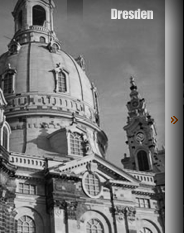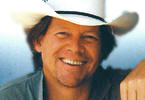Death of Democracy Or May the Best Hacker Win
by Christopher Bollyn
27 October 2000
What is particularly troubling about these machines is the fact that they contain an internal two-way modem, which enables anyone with a modem-equipped computer, from hackers and vendors to telephone company personnel and politicians, to potentially access and alter the computer’s tally of the votes.
---
Cook County, IL – Across the United States, in precincts from coast to coast, ballot-counting computers equipped with cellular telephony and two-way modems have counted the votes of the American people. These ballot-counting machines, designed and operated by private companies, and the laws that ushered in their use have essentially disenfranchised citizen election judges from the vote-counting process and relegated them to insignificant roles as public servants working for private business on election night.
Computer programmers leave no fingerprints inside a computer, what happens inside it cannot be seen, and its records, and printouts can be fixed to conceal whatever an operator wants to keep secret. However, here and in other key jurisdictions around the nation, election judges have signed off on tally tapes of computer-generated vote counts without any actual verification on their part that the tally is correct.
OFFICIAL INDIFFERENCE
Some officials concerned with elections have pondered the unthinkable; namely, the stealing of a presidential election by computer fraud in the metropolitan areas of key states. Steve White, former assistant attorney general of California, said, “ Given the importance of the national election, sooner or later it will be attempted. There is a real reluctance to concede the gravity of the problem.”
Officials at the Illinois State Board of Elections, the agency that approves the voting machines used in the state was contacted and asked about how the integrity of the elections could be safeguarded; each and every official interviewed was indifferent to the threat of computer vote fraud. Rick Fulle, Assistant Director of voting systems and 25-year veteran of the board said, “You can’t secure any computer system.”
When asked if election judges were permitted by law to do a manual recount of the votes – to verify the accuracy of the computer tally – the officials invariably replied, “You do not do a hand count,” although Fuller added, “nothing would stop them.”
A hand count of the votes by the election judges at the precinct level, before posting the results, is the only way to ensure that the machine tally is correct and that no computer fraud has been perpetrated. However, election officials discourage any manual audit saying that there are too many choices on the ballot and that a manual count would take too long.
In Switzerland, arguably the most democratic nation, all major political decisions are put before the people as referenda and polling with hand-counted paper ballots is conducted at least four times a year. Switzerland is not a member of the United Nations due simply to the fact that the Swiss people have rejected UN membership at the polls.
NOBODY CARES
Tests of computer vote-counting systems used in Illinois from 1983-1987, which tested tens of thousands of ballots, revealed significant errors in the computer counting in more than twenty percent of the tests. Fulle said that in Illinois today there is “a 16 percent error rate” with ballot-counting machines. He expected numerous problems on election night saying “equipment will fail across the state.”
“I don’t understand why nobody cares,” Michael L. Harty, former Illinois director of voting systems and standards said, “At one point, we had tabulation errors in twenty-eight percent of the systems tested, and nobody cared.”
The indifference of election officials, the people ultimately responsible for the integrity of the elections, proves a point made by a former president of the University of Chicago, Robert M. Hutchins, who said, “The death of democracy is not likely to be an assassination from ambush. It will be a slow extinction from apathy, indifference, and undernourishment."
Officials from the Illinois Board of Elections said that election judges are only required to verify that the number of ballots tabulated by the machine matches the number of ballots counted by the judges – as if voters are only voting for one candidate. Fulle added, “Nothing in the law [Illinois] requires that the count be accurate.” In this way the basic role of election judges -- to count and verify the accuracy of the vote -- has been usurped and compromised by election machines operated by private companies.
PUBLIC ELECTIONS ARE PRIVATE BUSINESS
Whether it was the Precinct Ballot Counter 2100 (PBC), the Optech Eagle III, the Model 100 Optic Mark Reader (OMR), or the Votronic touch-screen system that counted your vote, these machines have something in common:
they are all designed and operated by Elections Systems & Software, Inc. (ES&S) - and they each contain a two-way modem, allowing them to communicate - and be communicated with - while they are in operation.
What is particularly troubling about these machines is the fact that they contain an internal modem, which enables anyone with a modem-equipped computer, from hackers and vendors to telephone company personnel and politicians, to potentially access and alter the computer’s tally of the votes.
ES&S is “the largest company in the world focusing solely on automating the election process.” The company “provides specialized systems and software to automate the entire election process for local, state, and national governments worldwide.” ES&S is a reorganized company that was given a new name in November 1997 after combining two of the largest election machine companies: Business Records Corp. (BRC, formerly part of Cronus Industries) and American Information Systems, Inc. (AIS).
ES&S is a privately held company owned by unknown investors and headed by Aldo Tesi, who refers to the democratic franchise as “the election industry.” The company is headquartered in Omaha, Nebraska and supplies “thousands and thousands of machines being used across the country” to more than 2,200 U.S. jurisdictions in 49 states.
Cook County bought nearly 5,000 PBC machines from ES&S at a cost of $25 million for the suburbs and the city of Chicago in what a company spokesman called a “huge contract.”
ES&S FIASCO IN VENEZUELA
ES&S supplied Model 100 ballot-counting machines (through a Madrid-based company called Indra – Note the use of pagan deity names) for the elections in Venezuela.
It was reported (in the Omaha World Herald, whose publisher, John Gottschalk is one of the directors of ES&S) that the head of Venezuela’s National Elections Council, Etanislao Gonzalez, placed the blame for the technical difficulties during the election on the Nebraska-based ES&S. Gonzalez said, “the firm flagrantly failed to meet its commitments and the failure had destabilized the country’s electoral process.”
A Venezuelan air force jet flew to Omaha to fetch experts to “salvage” the election. It was reported that more than 6 percent of the 7,000 voting machines broke down during the Venezuelan election and that there were major “technical glitches”. ES&S said that the rate of failure in the Venezuela election was "slightly higher than we would expect."
EASY ACCESS ANYTIME
The PBC machines contain an internal Expedite modem made by Novatel Wireless, an international company based in San Diego, a “spin-off” of two Canadian companies: NovAtel, Inc. of Calgary, a company specializing in satellite communications and global positioning systems, and an internationally owned oil company in Alberta.
“You certainly run the risk of somebody hacking into these [vote-counting] machines,” a spokesman for Novatel Wireless said, “The machine can be accessed anytime it is plugged in,” – if one knows the computer’s IP (Internet Protocol) address. “Internet voting scares me,” he added, “it puts us in the same situation as a third-world country.” When asked about the ownership of Novatel Wireless, he said, “I’ve no idea who owns the company.”
Roy Saltman, a computer consultant at the National Institute of Standards and Technology’s Computer Systems Laboratory wrote a report for the U.S. Commerce Dept. in 1988 entitled, “Accuracy, Integrity, and Security in Computerized Vote-Tallying”, in which he documented many instances of vote mistabulation and the inherent vulnerability of U.S. voting systems to error and fraud. Among the possible methods he listed by which “unknown persons may perpetrate undiscoverable frauds” were “fraudulent alterations in the computer program or in control cards that manipulate the program” and “introduction of false voting summaries through changes in data stored in removable data storage units of precinct-located, vote-counting devices.”
Herb Deutsch, who works in the technical department of ES&S in Rockford, IL, where the PBC was designed has worked with election software and hardware for 25 years having formerly worked for BRC. Deutsch defended the PBC saying that its ballot tabulation program is “generic” and that its computer code has been “certified.”
CONTROL CARDS
However, each PBC machine is programmed and run by a pre-programmed 512-K memory card. According to Deutsch, “the memory card can be used for lots of purposes” and contains the coded instructions that “essentially tell the machine what to do” when it is turned on. These cards are programmed at the company offices of ES&S in Chicago. The card is removed by the election judges and turned in to headquarters when the polls close.
Vikant Corp., a Chicago area company owned by Alex Kantarovich of Minsk, Belorussia, supplied the control cards to ES&S. When asked where Vikant cards are produced, Kantarovich said, “I cannot disclose where the cards are made,” but admitted that they are not made in America.
Mr. Kantarovich said that he has been in America for 11 years but declined to discuss his employment prior to running Vikant Corp., saying, “I don’t want to disclose that information.”
Kantarovich said he had obtained his degree in the Soviet Union and initially refused to answer questions about how his product was chosen for the ES&S voting equipment saying that it was “inside information that I cannot disclose.” Kantarovich said later that his firm was chosen over larger firms like IBM and Panasonic because Vikant was uniquely able to meet the specific requirements of ES&S and provide the cards on short notice. He added, however, that there had been “some problems” with the cards from other suppliers.
Kantarovich said, “To tell you the truth, I have no idea how these vote counting machines work. We are just the supplier of one particular product.”
“NO ONE IS SAFE”
Deutsch said that he trusted that the election computers were safe from hackers on the very day that it was reported that Microsoft’s computers and source code had been “hacked” for a week. Teenagers have demonstrated that breaking into the most secure computer networks in the world is “child’s play,” but serious questions about the security of the national election computer network are dismissed as preposterous.
Security experts say the attack on Microsoft shows that no one is safe - it was reported that the information stolen from Microsoft was sent to Russia, although this could be a front for people anywhere on the net.
Source:
NA (Network America) e-wire
http://www.votefraud.org/News/2000/10/102700.html





 Computer Vote Fraud
Computer Vote Fraud Death of Democracy Or May the Best Hacker Win
Death of Democracy Or May the Best Hacker Win


